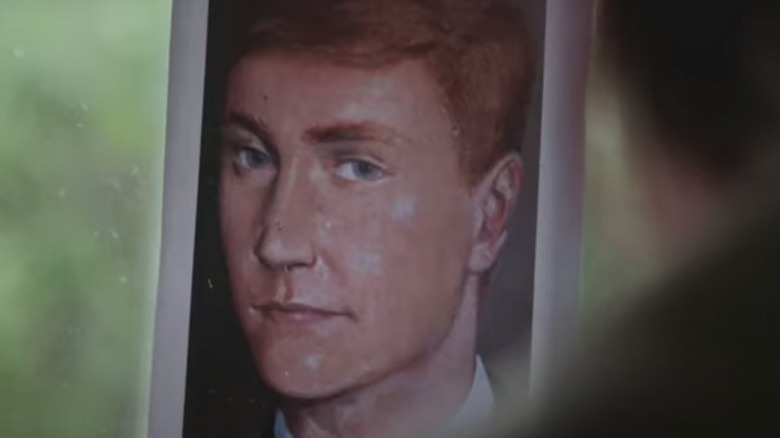The Disturbing Theory Behind The Police And Serial Killer Bible John
The mysterious serial killer nicknamed Bible John took the lives of three women in Glasgow, Scotland in the 1960s but was never caught. Today the case is mired in controversy because of suspicions of a possible police cover-up.
The Bible John killer has become one of the most talked-about cold cases in British history due to some of the strange details surrounding the murders. The killer's three victims — Helen Puttock, Jemima McDonald, and Patricia Docker — were all killed between 1968 and 1969, after visiting the Barrowland Ballroom, a popular music venue in Glasgow (via The Daily Mail). All three of the victims were savagely beaten and strangled.
Witness statements revealed quite a few details about the possible identity of the killer. The second victim, Jemima McDonald, was seen with a man outside the Barrowland club the night she disappeared. The man in question was well-dressed and was heard quoting the Bible in conversation. The pair left together and McDonald was found raped and murdered the next day in an abandoned building. The final known victim, Helen Puttock, was also seen with the killer. Puttock got into a cab with her sister and a man named John the night she died. John also quoted Biblical verse, while complaining about adultery on the ride home (via the BBC). Puttock's sister left the cab first, and her sister was found the next morning, raped and killed, behind her own home.
The man in the cab
After they had compiled a detailed description of the killer — a 6-feet-tall young man with reddish hair and a Glaswegian accent — it seemed likely that the police would crack the case. However, despite interviewing 7,000 people, nobody was ever arrested (via The Daily Mail). Did the killer get lucky, or was there a more nefarious reason he was never caught?
A reexamination of the evidence has led some to argue that the police knew the killer's identity all along. Two officers from Glasgow revisited the cold case in 1995, convinced that the true culprit was John Irvine McInnes. They believed that McInnes had escaped justice due to his police connections (via the BBC).
The suspected killer, who committed suicide in 1980, was the cousin of a police officer, James McInnes. Officer McInnes was also a close friend of Superintendent Joe Beattie, and it is alleged Beattie agreed to keep John's name out of the investigation. Police visited John at his home in Glasgow, just two days after Puttock's body was found, but they kept the visit hushed up. Police who reopened the case also believe that a key piece of evidence — a card from the furniture store where John worked — was hidden during the investigation.
Reopening the case
At the time the initial investigation was carried out, John McInnes was presented to witnesses for identification. However, according to the BBC, in the 1990s, when a photo of John was shown to the taxi driver who met the killer, the driver confirmed that it was a match. The body of John McInnes was dug up so that DNA evidence from the scene could be tested against his body. However, the test results were inconclusive, and to this day there is no concrete evidence to confirm he was the killer.
Speaking to the Daily Record in November 2022, ex-detective superintendent Robert Johnstone believes that the 1995 investigation did not go far enough, and should not have been closed. Johnstone worked on the original case in the 1960s but never heard a word about John McInnes at the time.
Superintendent John Beattie, who would have been instrumental to the cover-up if it ever occurred, was questioned numerous times in the '90s but never revealed any new information. He died in 2000, taking any secrets about the case with him. You can listen to a new retelling of the story in full, via a Radio Scotland podcast posted by the BBC.


